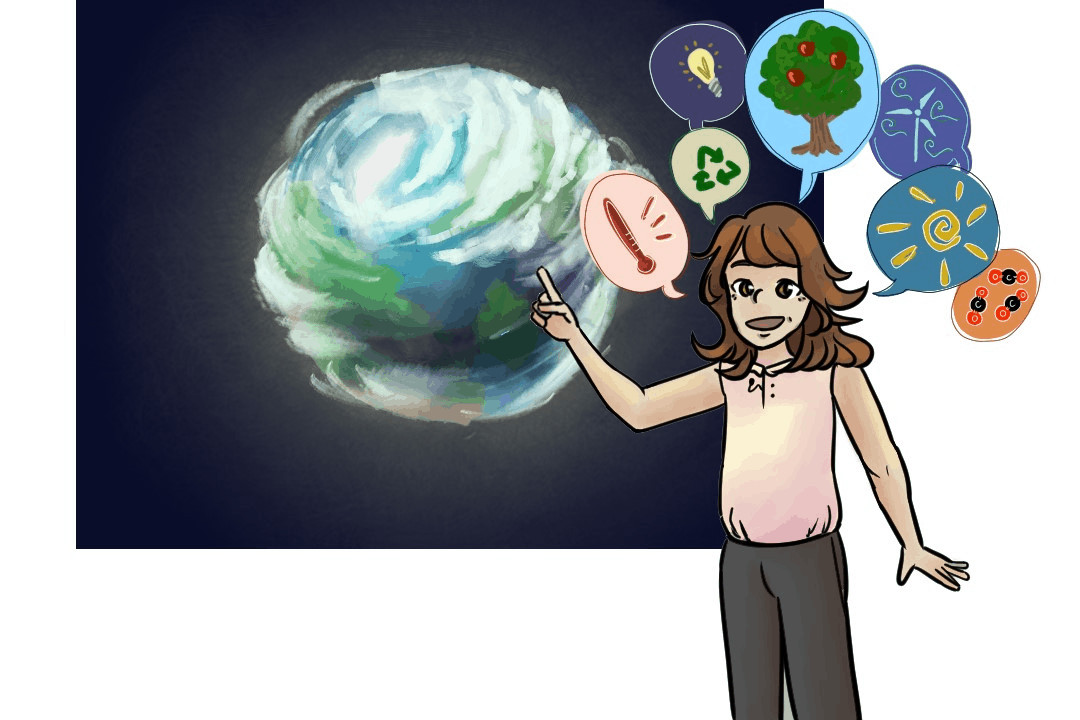In light of U of T recently divesting its endowment fund from fossil fuels, many in the university community have been invested in how the university plans to fulfill its promises about sustainability. The university has been following a sustainability report it laid out in 2019, which plans out its approach until 2024.
Students have also been pushing the university to take more interest in designing curricula around environmental sustainability. Though U of T already has a number of opportunities in place for students to incorporate sustainability into their degree, students have emphasized that environmental knowledge should be incorporated into all degrees.
A green future
U of T’s sustainability plan report, released in 2019, outlines how the university will achieve its climate-related goals. The plan rests on three pillars: production, which is about using cleaner energy and capturing carbon dioxide directly from the air; distribution, which is about minimizing energy losses by increasing efficiency; and consumption, which is about reducing energy use by retrofitting buildings.
In an email to The Varsity, Ron Saporta, chief operating officer of property & sustainability, wrote that the university has reduced its emissions by an average of 55,000 tonnes per year over the past 10 years.
The university has also implemented various projects, such as rooftop solar panels and ground source heat pumps, that represent an investment of $50 million and could reduce emissions by 8,600 tonnes. On its own, the urban geoexchange field being built as part of the Landmark Project will reduce emissions by 15,000 tonnes per year.
Moreover, the university is planning to increase its solar energy capacity by 85 per cent. Its Sustainable Change Program is designed to help community members to promote sustainable practices in university spaces like labs and classrooms.
Since the university is constantly growing in size, it also aims to mitigate the effects of that growth and to incorporate the renewal of old spaces to ensure low-carbon performance.
Shaping education
Professor John Robinson — the presidential advisor on environment, climate change and sustainability — wrote about the ways that U of T is trying to promote sustainability in an email to The Varsity. This includes faculty and students across a range of disciplines studying the impact of climate change and alternatives to fossil fuels.
Moreover, the university provides students with access to courses and co-curricular activities on sustainability through the U of T Sustainability Pathways program. Through these courses, students in any discipline can incorporate sustainability practices into their degree. By doing so, they can gain the title of ‘sustainable scholar,’ which indicates they have completed a sustainability certificate or minor.
Some divisions, such as the Faculty of Arts & Science, have also implemented their own sustainable scholar programs. 68 per cent of undergraduate students enrolled at U of T have access to the sustainability pathways program through their division. Additionally, once UTM approves the sustainability scholar program, 88 per cent of undergraduate students will have access to it.
Students can also use the undergraduate sustainability inventory to find courses based on keywords from the United Nations’ Sustainable Development Goals.
In an email to The Varsity, Madeline Szabo, a second-year student studying education, history, and English, wrote that she thinks it’s important for education to be oriented around the climate crisis and environmental sustainability because it will encourage people to take action against climate change.
Szabo added that it’s specifically important for curricula to focus on solutions rather than just teaching about climate change, and that discussions of environmental sustainability should take on an intersectional lens that incorporates Indigenous issues.
Hannah Meisch, a second-year environmental science and biodiversity major, added that while fulfilling her breadth requirements, she was surprised to find that other programs don’t focus on how the environment functions in tandem with their discipline. This means students lack understanding of environmental issues.
“The environment encompasses everything, not to mention that any social issues we are facing are inherently linked with environmental issues, thus all disciplines of study must be included in the solution,” Meisch concluded. “It is necessary that all environmental connections and especially environmental consequences of that study be included in the curricula.”


